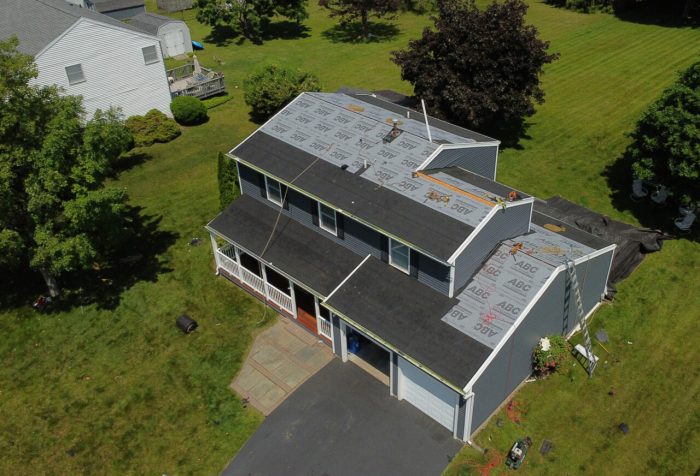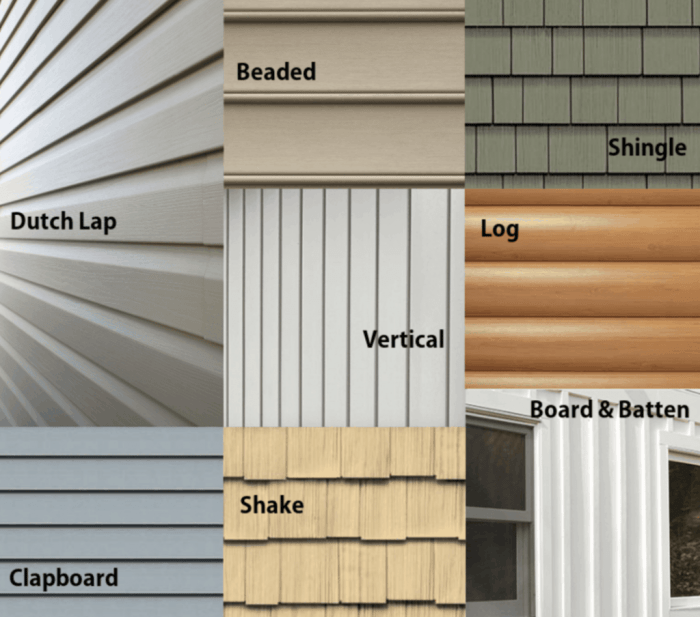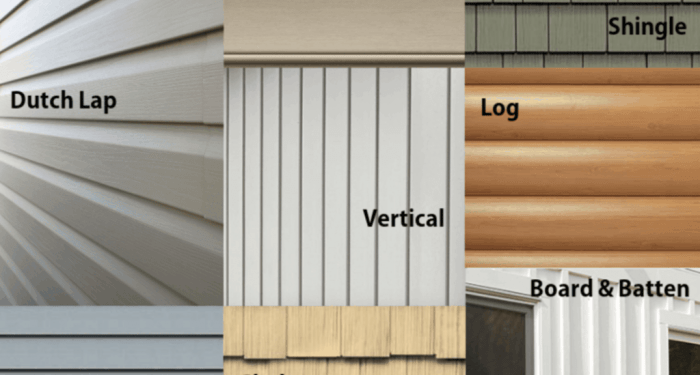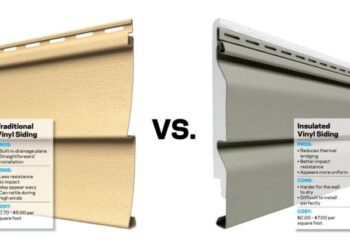As house siding financing options take the spotlight, this introduction sets the stage for an informative and engaging discussion on the various ways to finance your siding project.
In the following paragraphs, we will delve into the different types of financing available, weigh the pros and cons, and provide insights on how to make the right choice for your specific needs.
 House siding financing refers to the various ways homeowners can secure funding to cover the costs of installing or replacing siding on their homes. This could include options like loans, lines of credit, or payment plans offered by siding companies.
Financing options are essential for house siding projects because they can help homeowners manage the often significant upfront costs associated with siding installation. Instead of having to pay a large sum of money all at once, financing allows homeowners to spread out the payments over time, making the project more affordable and manageable.
.
House siding financing refers to the various ways homeowners can secure funding to cover the costs of installing or replacing siding on their homes. This could include options like loans, lines of credit, or payment plans offered by siding companies.
Financing options are essential for house siding projects because they can help homeowners manage the often significant upfront costs associated with siding installation. Instead of having to pay a large sum of money all at once, financing allows homeowners to spread out the payments over time, making the project more affordable and manageable.
.
 When considering house siding projects, there are alternatives to traditional financing options that homeowners can explore. These alternatives can provide flexibility and potentially save money in the long run.
When considering house siding projects, there are alternatives to traditional financing options that homeowners can explore. These alternatives can provide flexibility and potentially save money in the long run.
 In conclusion, understanding the world of house siding financing options can empower you to make informed decisions when embarking on your next home improvement project.
In conclusion, understanding the world of house siding financing options can empower you to make informed decisions when embarking on your next home improvement project.
Introduction to House Siding Financing Options
 House siding financing refers to the various ways homeowners can secure funding to cover the costs of installing or replacing siding on their homes. This could include options like loans, lines of credit, or payment plans offered by siding companies.
Financing options are essential for house siding projects because they can help homeowners manage the often significant upfront costs associated with siding installation. Instead of having to pay a large sum of money all at once, financing allows homeowners to spread out the payments over time, making the project more affordable and manageable.
House siding financing refers to the various ways homeowners can secure funding to cover the costs of installing or replacing siding on their homes. This could include options like loans, lines of credit, or payment plans offered by siding companies.
Financing options are essential for house siding projects because they can help homeowners manage the often significant upfront costs associated with siding installation. Instead of having to pay a large sum of money all at once, financing allows homeowners to spread out the payments over time, making the project more affordable and manageable.
Benefits of Having Various Financing Options Available
- Flexibility: Having multiple financing options available gives homeowners the flexibility to choose the option that best suits their financial situation and preferences.
- Accessibility: Not all homeowners have the cash on hand to pay for a siding project upfront. Financing options make it possible for more people to afford to improve the exterior of their homes.
- Increased Property Value: Investing in quality siding can increase the value of a home. With financing options, homeowners can make this investment without putting a strain on their finances.
- Peace of Mind: Knowing that there are financing options available can give homeowners peace of mind, knowing that they have a plan in place to cover the costs of their siding project.
Types of House Siding Financing Options
When it comes to financing options for house siding, there are several choices available to homeowners. These options can vary in terms of interest rates, repayment terms, and eligibility criteria. Let's explore some of the common types of house siding financing options:Traditional Loans
Traditional loans, such as personal loans or home equity loans, are common financing options for house siding projects. These loans are typically obtained from banks or credit unions and have fixed interest rates and repayment terms. Borrowers need to have a good credit score and stable income to qualify for traditional loans.Specialized Siding Financing
Specialized siding financing options are specifically designed for home improvement projects like siding installation. These financing options may include programs offered by siding manufacturers, contractors, or specialized lenders. They often come with promotional interest rates or flexible repayment terms tailored to the needs of homeowners looking to upgrade their siding.Comparison and Criteria for Qualifying
- Traditional loans: Require good credit score and stable income, fixed interest rates.
- Specialized siding financing: Tailored for home improvement projects, may include promotional rates, and flexible repayment terms.
Pros and Cons of House Siding Financing
When considering house siding financing options, it's essential to weigh the advantages and disadvantages to make an informed decision.Advantages of House Siding Financing
- Allows you to upgrade your home without a large upfront cost
- Spread payments over time, making it more manageable for your budget
- Potential tax benefits or incentives for energy-efficient siding choices
- Increases the value of your home, potentially leading to higher resale value
Drawbacks of House Siding Financing
- Accrual of interest, potentially leading to higher overall cost
- Risks of defaulting on payments, affecting your credit score
- May limit your future borrowing capacity for other investments
- Some financing options may come with hidden fees or penalties
Situations Where Siding Financing Might Be Beneficial
- When you want to improve the aesthetics and energy efficiency of your home before selling
- In cases where emergency siding repairs are needed, but funds are limited
- If you plan to stay in your home long-term and can afford the monthly payments
- For homeowners looking to take advantage of energy-efficient siding options for long-term savings
How to Choose the Right House Siding Financing
Choosing the right house siding financing option is crucial to ensure that you can afford the cost of the project without putting a strain on your finances. There are several factors to consider when selecting the best financing option for your house siding.Factors to Consider
- Interest Rates: Compare the interest rates offered by different financing options to choose the one that is most affordable. Lower interest rates can save you money in the long run.
- Repayment Terms: Look into the repayment terms of each financing option, including the duration of the loan and the monthly payments. Make sure you can comfortably meet the repayment schedule.
- Eligibility Requirements: Check the eligibility requirements for each financing option to see if you qualify. Some options may have strict criteria that you need to meet.
Assessing the Best Option
When assessing which financing option aligns best with your specific siding needs, consider factors such as the total cost of the project, your budget, and how quickly you need the funds. It's important to choose a financing option that not only meets your financial needs but also offers favorable terms and conditions.Applying for House Siding Financing
When it comes to applying for house siding financing, there are a few key steps to follow in order to secure the funding you need for your siding projectStep-by-Step Guide for Applying for House Siding Financing
- Research Lenders: Start by researching different lenders that offer house siding financing options. Compare interest rates, terms, and eligibility requirements to find the best fit for your needs.
- Check Eligibility: Once you have identified potential lenders, check their eligibility criteria to ensure you meet the requirements. This may include factors like credit score, income level, and debt-to-income ratio.
- Submit Application: Fill out the application form provided by the lender of your choice. Be sure to provide accurate and up-to-date information to expedite the approval process.
- Provide Documentation: When applying for house siding financing, you will likely need to submit various documents such as proof of income, identification, and details about the siding project.
- Wait for Approval: After submitting your application and documentation, wait for the lender to review and approve your request. This process may take a few days to a few weeks depending on the lender.
- Review Terms: Once you receive approval, carefully review the terms of the financing agreement including interest rates, repayment schedule, and any fees associated with the loan.
- Sign Agreement: If you are satisfied with the terms of the financing, sign the agreement with the lender to finalize the loan and receive the funds for your house siding project.
Documentation Required for House Siding Financing
- Proof of Income: Lenders will often require proof of income such as pay stubs, tax returns, or bank statements to verify your ability to repay the loan.
- Identification: You will need to provide a valid form of identification such as a driver's license or passport to verify your identity.
- Project Details: Be prepared to provide details about the house siding project including estimated costs, contractor information, and timeline for completion.
- Credit History: Lenders may also request a copy of your credit report to assess your creditworthiness and determine the interest rate for the financing.
Alternatives to House Siding Financing
 When considering house siding projects, there are alternatives to traditional financing options that homeowners can explore. These alternatives can provide flexibility and potentially save money in the long run.
When considering house siding projects, there are alternatives to traditional financing options that homeowners can explore. These alternatives can provide flexibility and potentially save money in the long run.
Self-Financing
Self-financing involves using personal savings or funds from other investments to pay for the house siding project. This option eliminates the need for loans or interest payments, resulting in cost savings over time. However, it may deplete savings that could be used for emergencies or other investments.Credit Cards
Using credit cards to finance house siding projects can be a quick and convenient option. However, high-interest rates on credit card balances can lead to significant costs if the balance is not paid off quickly. It is essential to consider the interest rates and fees associated with using credit cards for large purchases.Home Equity Line of Credit (HELOC)
A HELOC allows homeowners to borrow against the equity in their home to fund renovations, including house siding projects. This option typically offers lower interest rates compared to credit cards or personal loans. However, using a HELOC puts your home at risk if you are unable to repay the borrowed amount.Personal Loans
Personal loans from banks or online lenders can be another alternative for financing house siding projects. These loans typically have fixed interest rates and repayment terms, making it easier to budget for the project. However, the interest rates may be higher compared to other financing options.Contractor Financing
Some siding contractors offer financing options to their customers, allowing them to pay for the project over time. While this can be a convenient option, it's essential to carefully review the terms and conditions, including interest rates and fees, before committing to contractor financing.Closing Notes
 In conclusion, understanding the world of house siding financing options can empower you to make informed decisions when embarking on your next home improvement project.
In conclusion, understanding the world of house siding financing options can empower you to make informed decisions when embarking on your next home improvement project.







